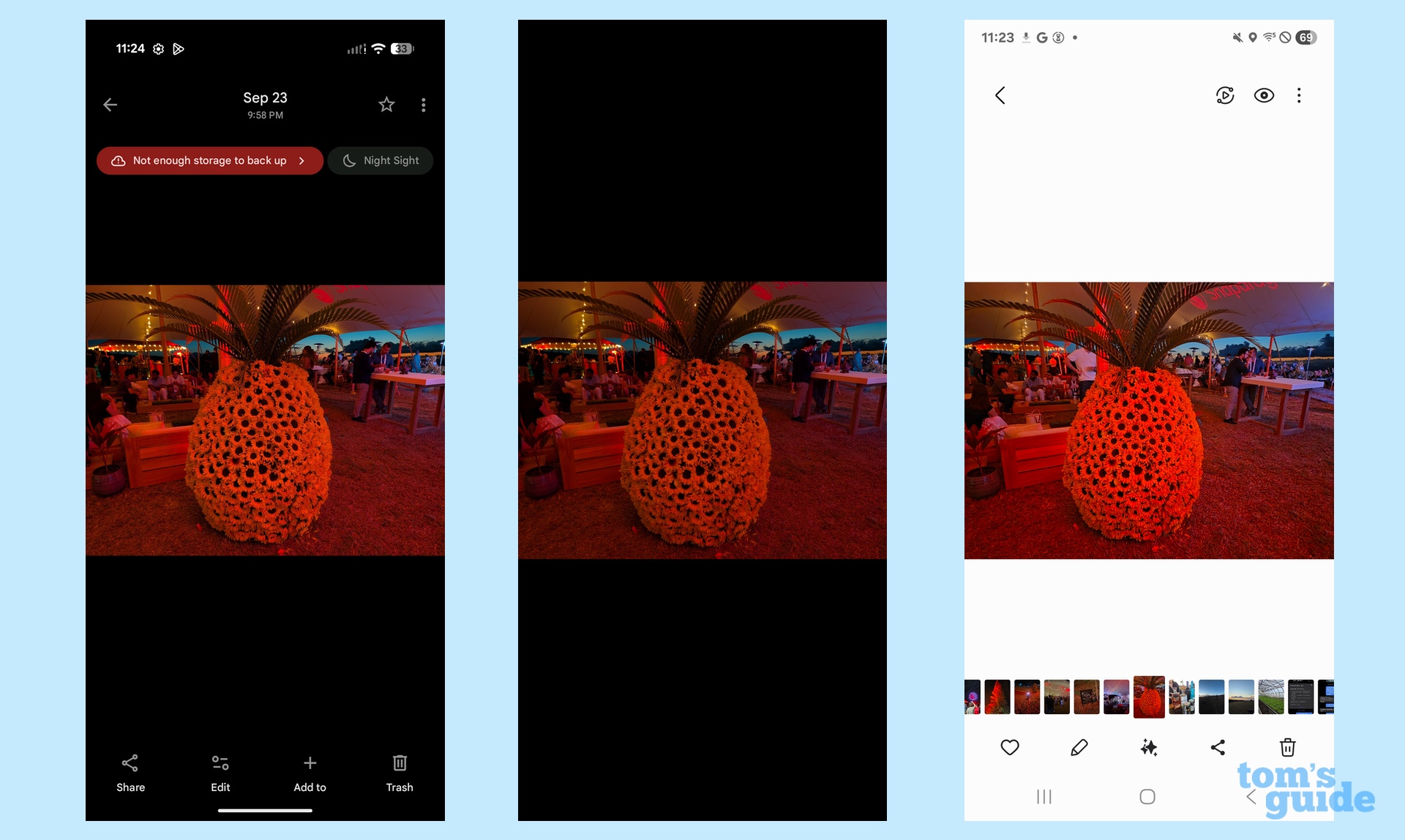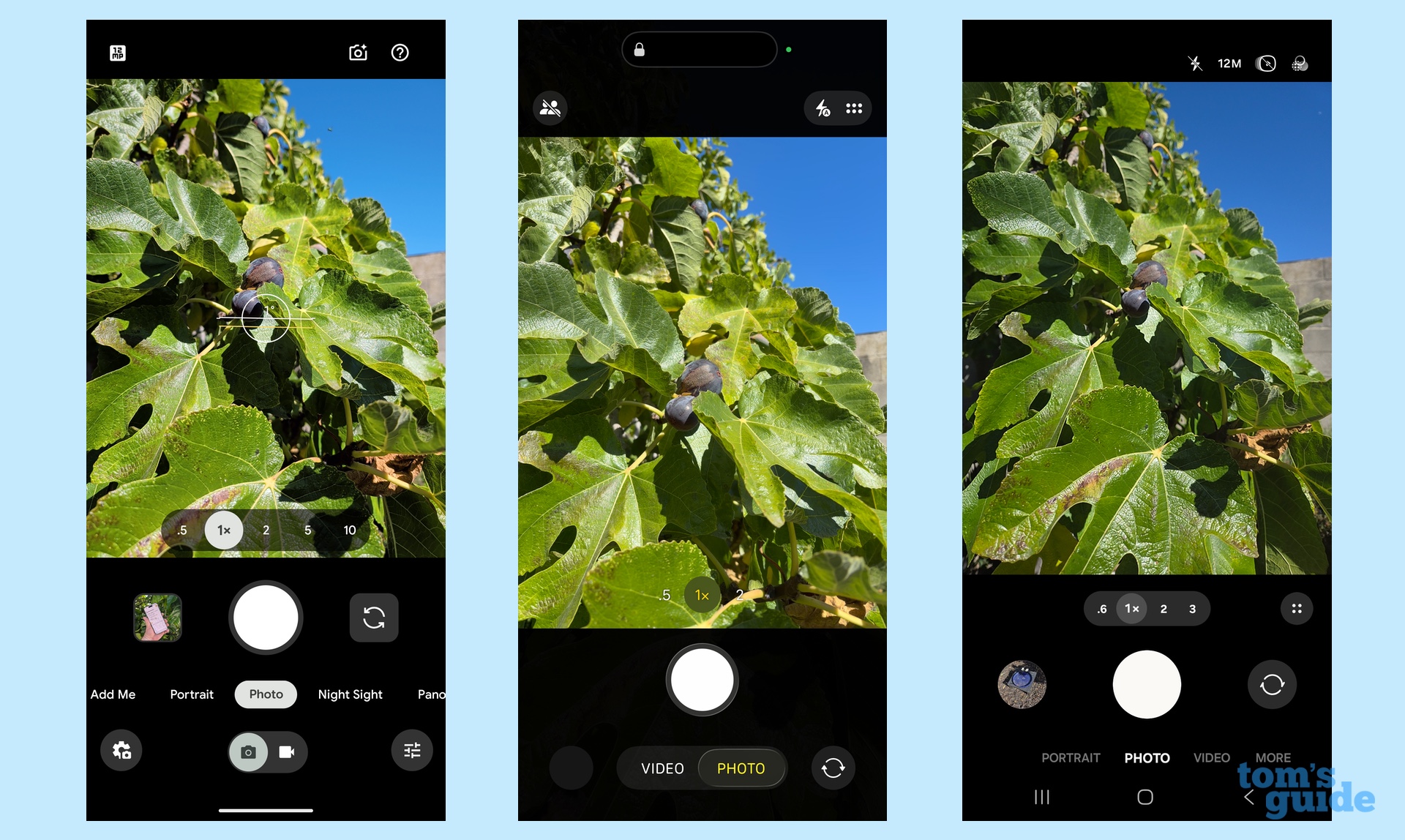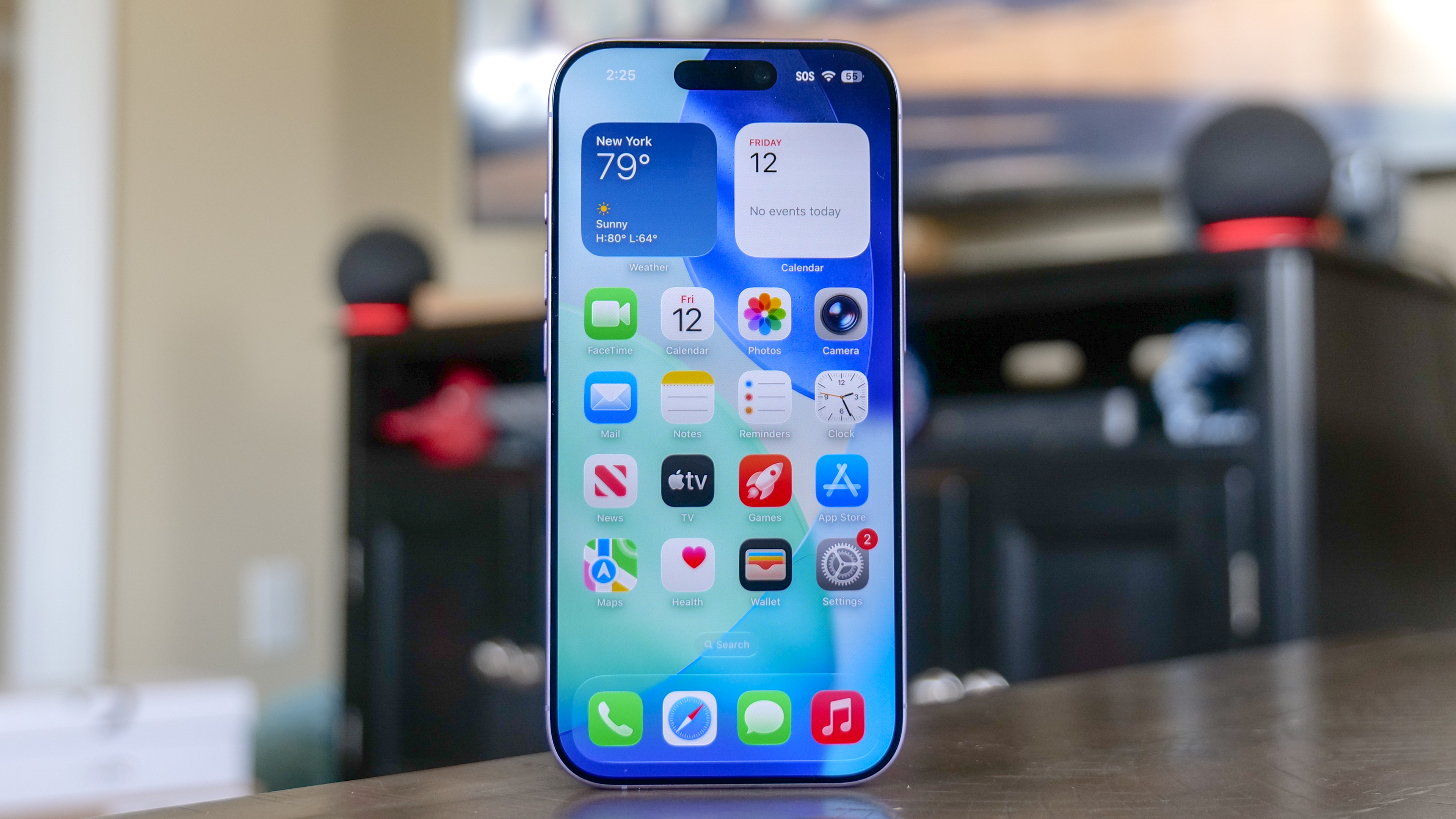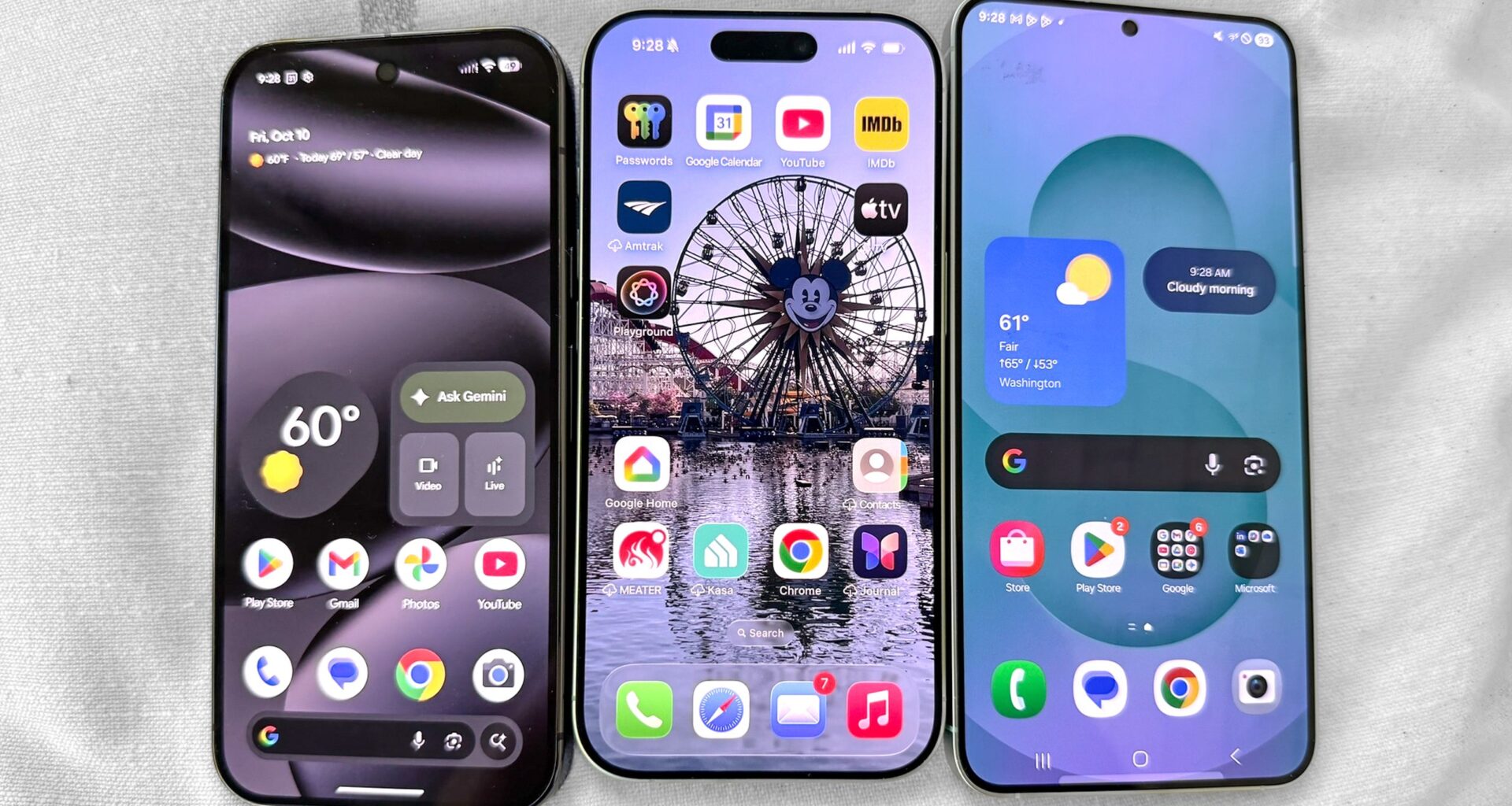We spend a lot of time looking at our phone screens, and in recent years, phone makers have invested a lot of resources in giving us something impressive to look at. From brighter, more colorful displays to speedier refresh rates, today’s phone screens are better than ever. But among the leading flagship phones — the iPhone, the Galaxy, and the Pixel — which one has the best display?
It’s a question we’re now able to answer, at least subjectively. The release of the iPhone 17 lineup last month means that Apple, Samsung, and Google have all rolled out new flagship phones this year. And while it won’t be long before the Galaxy S26 series pops up at the start of 2026, we’re at a point right now where we can look at all the best phone contenders side by side to see which one has a display that truly stands out.
So that’s exactly what I did. Now that I have a new iPhone 17, I was eager to see how its screen measured up to the ones on the latest Samsung and Google phones. So I grabbed my iPhone 17 and put it next to a Galaxy S25 Plus and Pixel 10 Pro for a series of tests meant to show off the strengths of each phone’s screen.
You may like

(Image credit: Future)
On paper, this would seem like a mismatch for the iPhone 17, as it’s the entry-level phone in Apple’s lineup; at $799, it’s $200 less than both the Galaxy S25 Edge and Pixel 10 Pro, which are considered more premium models.
However, in terms of displays, it’s more of a fair fight than you might imagine, as Apple now equips the iPhone 17 with a Super Retina XDR display. That means the iPhone 17 has the same adaptive refresh rate, resolution, and peak brightness as the iPhone 17 Pro, which would have been a closer match to the other phones I have in price. In fact, the biggest difference among the phones I have on hand is the larger 6.7-inch panel on the Galaxy S25 Plus — the iPhone and Pixel both have 6.3-inch screens.
Enough preamble, though — let’s get to testing and comparing these iPhone 17, Galaxy S25, and Pixel 10 models to see which one offers the best screen in a number of different scenarios.
Let’s start by looking at the lab test results for each phone, where we measure the brightness, color range, and color accuracy for the handsets we review. Comparing these three particular phones, each model seems to stand out in its own way.
Swipe to scroll horizontallyRow 0 – Cell 0
iPhone 17
Samsung Galaxy S25 Plus
Google Pixel 10 Pro
Brightness (nits)
1,505
1,350
2,017
DCI-P3 (%)
80.2
107.8 (Vivid)/ 87.9 (Natural)
89.5 (Adaptive) / 76.3 (Natural)
Delta-E
0.20
0.23 (Vivid) /0.22 (Natural)
0.32 (Adaptive) / 0.25 (Natural)
Our lab tests have the Pixel 10 Pro as the brightest phone of the bunch, which you would expect since it claims the highest peak brightness at 3,300 nits. The iPhone 17 claims to be able to reach 3,000 nits outdoors, while the Galaxy S25 Plus theoretically tops out at 2,600 nits.
To my eyes, the Pixel 10 Pro is certainly bright, but the iPhone 17 seemed to hold its own, especially when I was outside in direct sunlight. The Galaxy S25 Plus looked dimmer than the other two phones, though it’s still bright enough, as we’ll see in subsequent tests.
In its default Vivid mode, the Galaxy S25 Plus captured the widest array of colors in the DCI-P3 color spectrum, with the iPhone 17 and Pixel 10 more evenly matched. The iPhone 17 had the best color accuracy, as a lower Delta-E score means more accurate colors. The Galaxy S25 Plus wasn’t far off the pace, while to get more accurate colors on the Pixel 10 Pro screen, you’d have to switch from the Adaptive mode to Natural.
You may like

(Image credit: Future)
Watching the trailer for “Wicked: For Good” on all three phones, I thought the Galaxy S25 Plus had the most vivid colors, though occasionally Cynthia Erivo’s green skin looked a little too bright. The colors seemed more natural on both the iPhone 17 and Pixel 10 Pro. Those phones also excelled at brighter lit scenes, highlighting the pinks in Ariana Grande’s gown or the green dress Michelle Yeoh wore.
But I was less interested in color and more focused on finding out how visible video can remain once I was outside the comforts of my office. I watched all three trailers outside in direct sunlight, using the brightness slider on each phone to see how dim I could make the displays while still being able to make out details in the “Wicked” trailer.
The good news: When all three phones were at maximum brightness, it was easy to watch the trailer, even with the sun beating down on the displays. The iPhone 17 also remained pretty visible when I dropped the brightness to 66%, even if some finer details were lost.
The Pixel 10 Pro screen remained very sharp up until the 70% mark, but beyond that, darkly lit scenes became harder to view. By the time the brightness slider hit 50%, I couldn’t make out anything.
The Galaxy S25 Plus fared the worst in this test. With the brightness slider set to 66% or so, I couldn’t really see any details, while the trailer remained visible on both the iPhone and Pixel.
Rankings: 1. iPhone 17 2. Pixel 10 Pro 3. Galaxy S25 Plus

(Image credit: Future)
As with the video test, I wanted to see if I was able to easily play games in bright sunlight while still being able to see graphically elaborate scenes and operate on-screen controls. I also wanted to see how much I could dim the screen and still be able to successfully play the game.
I picked Asphalt 9, as it’s a graphically demanding game with several different on-screen controls to manage. I ran three different races on each phone — one in the shade, another in direct sunlight, and a final game with the brightness of the screen set at the 50% mark.
All three phones feature very capable chipsets and fast-refreshing displays, so I’m pleased to report that the iPhone, Galaxy, and Pixel devices all were able to handle the graphical demands of background details whizzing by and other cars speeding into view without any hiccups or dropped frames.
The three phones also performed well in the shade, as I was able to spot the details in the San Francisco streets that were the sight of my first Asphalt 9 race. Likewise, the Galaxy S25 Plus and iPhone 17 remained pretty visible when I played in direct sunlight, while the Pixel 10 Pro became a little harder to see.
That really became noticeable when I dropped the brightness slider on each phone. I really had a hard time making out the on-screen controls on the Pixel 10 Pro, and only the broadest outlines of the race course and other cars were visible. It was a little bit easier to see things on the Galaxy S25 Plus and iPhone 17, though I did have to squint to find the drift and turbo boost controls.
Rankings: 1. Galaxy S25 Plus 2. iPhone 17 3. Pixel 10 Pro

(Image credit: Future)
With adaptive refresh rates on each phone ensuring smooth scrolling as I thumbed through articles on a web browser, I was more interested in seeing how low I could drop screen brightness and still comfortably read text.
For the Pixel 10 Pro, the answer was not very much. I got the brightness slider down to 69% before the web page text on a Tom’s Guide article became too faint to read.
The Galaxy S25 Plus fared a little better, with its brightness dropping to 60% before readability suffered. But the iPhone 17 takes this test by dropping a little bit further — 55% by my count — and keeping text visible.
I should note here that the Galaxy S25 Plus has a secret weapon you can enable in Settings — an Extra Brightness feature that further boosts the visibility of the screen, though at the expense of battery life. With Extra Brightness turned on, I was able to still read text on the S25 Plus’ display with brightness dropped to 40%.
Rankings: 1. iPhone 17 2. Galaxy S25 Plus 3. Pixel 10 Pro

(Image credit: Future)
This was easily the most straightforward — and subjective — of my tests. I summoned up a photo I had shot and judged which screen provided the most detailed view, even when the phones were in direct sunlight. I selected a nighttime photo of a floral display arranged to look like a pineapple because I thought it presented the biggest challenge for making out finer details.
I didn’t drop the brightness slider for this test, instead maxing out the brightness on each display. And that probably put the Galaxy S25 Plus at a disadvantage, considering its screen is the least bright of the devices tested here. The picture is pretty dim on the S25’s screen, with the string of overhead lights not shining through like they did on the Pixel and iPhone displays.
I think the image looked its best on the Pixel 10 Pro screen, particularly with the different colors of the sky in the background standing out on the display. The iPhone 17 came in a close second, as the picture still looked pretty sharp on its screen in the sun.
Rankings: 1. Pixel 10 Pro 2. iPhone 17 3. Galaxy S25 Plus

(Image credit: Future)
This final test is a personal one to me, as someone who’s shot his share of camera face-offs that involved lining up shots on dim displays and hoping that I had actually framed the photo properly. I wanted to see how visible the camera controls remained on the Apple, Samsung, and Google phones, even if the display wasn’t at its brightest. So for this test, I lined up a shot and then tested how much I could dim the display and still be confident enough to tap the shutter button.
Maybe it’s the streamlined Camera app controls in iOS 26, but the iPhone 17 thrived in this test. I dropped brightness by as much as two-thirds and could still see enough of the shot in the on-screen viewfinder to know I’d be getting a good shot.
The Galaxy S25 Plus also fared well, as I could reduce the brightness by more than 50% and still operate the camera successfully. That’s a far cry from the Pixel 10 Pro’s performance, where the viewfinder and camera controls became noticeably less visible with brightness dropped down to 62%.
Rankings: iPhone 17 2. Galaxy S25 Plus 3. Pixel 10 Pro

(Image credit: Tom’s Guide / John Velasco)
I’ll be the first to admit these tests are fairly subjective. What looks dim to my 50-plus-year-old eyes may look perfectly fine to yours. And really, all three phones have perfectly visible screens when you max out the brightness.
That said, maxing out the brightness does have an impact on battery life. So if you have to keep your display super bright all the time, it’s not going to last as long on a charge.
That’s why, if I had to be absolutely guaranteed of making out finer details on my phone screen regardless of lighting conditions, I’d reach for the iPhone 17. It finished tops in three of my five tests, including the reading and camera tests, which are most important to me, given what I use my phone for.
I think the Galaxy S25 Plus and Pixel 10 Pro offer fine displays in their own right. But based on my experience, the iPhone 17 screen outshines both.
Today’s best Google Pixel 10 Pro, Apple iPhone 17 and Samsung Galaxy S25 Plus deals

